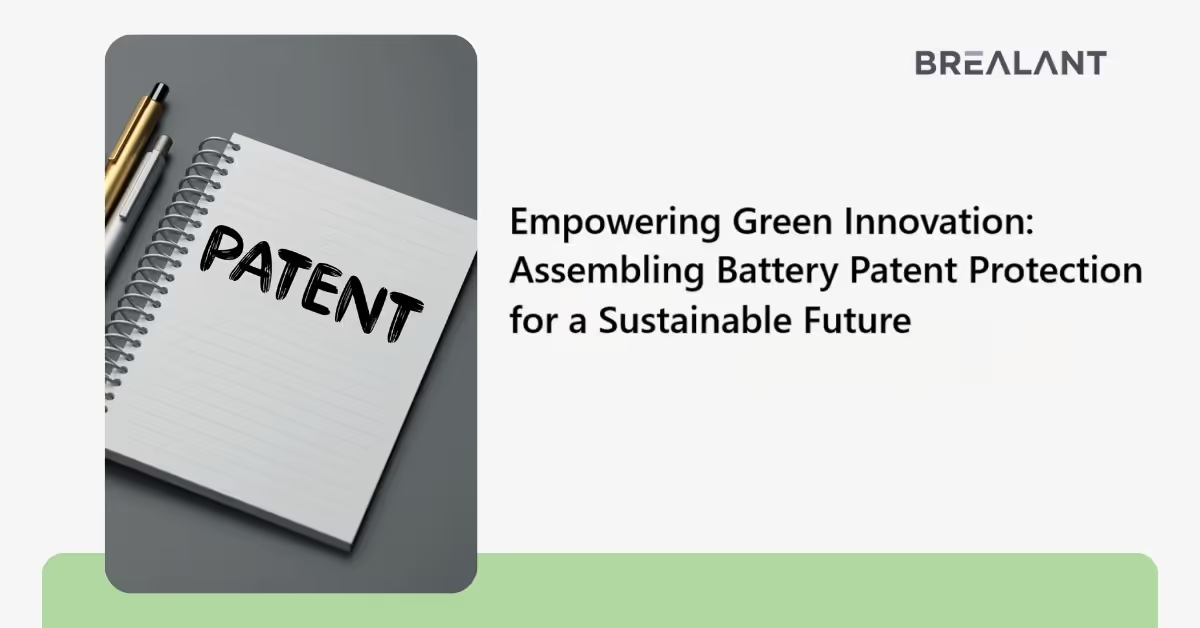In sustainability, the race to innovate cleaner, more efficient energy solutions is both challenging and necessary. Central to this quest is developing advanced battery technologies that can power everything from electric vehicles to renewable energy storage systems. However, as the momentum behind green innovation grows, so does the importance of protecting the intellectual property (IP) rights associated with these breakthroughs. In this blog post, we delve into the critical role of patent protection in advancing green innovation, particularly in battery technologies.
The Green Innovation Imperative
The urgency to transition towards greener technologies stems from many environmental and economic concerns. Fossil fuel dependence contributes to climate change and poses geopolitical risks and health hazards. As nations and industries grapple with these challenges, there's a growing consensus that sustainable energy solutions, particularly those centered around advanced batteries, can pave the way for a cleaner, more prosperous future.
The Power of Patents
Patents serve as the cornerstone of innovation by granting inventors exclusive rights to their creations for a specified period. This exclusivity incentivizes investment in research and development, driving forward technological progress. In the context of green innovation, patents play a pivotal role in:
- Attracting Investment: Venture capitalists and other investors are more likely to fund startups and R&D initiatives with strong IP protections. Patents provide a tangible asset that can be leveraged for securing funding and partnerships.
- Fostering Collaboration: By delineating the boundaries of innovation, patents enable companies to engage in collaborative ventures without fearing IP infringement. This collaborative spirit is essential for pooling resources and expertise to tackle complex challenges.
- Facilitating Licensing Agreements: Patents can be licensed to third parties, allowing for the widespread adoption and commercialization of green technologies. Licensing agreements can generate revenue for inventors while accelerating the dissemination of sustainable solutions.
Challenges in Battery Patent Landscape
While the potential benefits of patent protection are clear, the battery technology landscape presents unique challenges. The rapid pace of innovation and the interdisciplinary nature of battery research have led to a complex web of overlapping patents and technologies. Some of the challenges include:
- Technological Overlaps: Given the multifaceted nature of battery technologies, innovations often build upon existing knowledge, leading to potential conflicts over patent rights.
- Global Competition: The global race to dominate the green energy market has intensified competition, with countries and corporations vying for technological supremacy. This competitive landscape can result in disputes over patent infringement and intellectual property theft.
- Regulatory Hurdles: Different jurisdictions have varying patent laws and regulations, making securing comprehensive protection across multiple markets challenging.
Strategies for Effective Patent Protection
Despite the challenges, several strategies can help navigate the battery patent landscape effectively:
- Early Filing: Given the competitive nature of green innovation, early filing of patent applications is crucial. Proactively securing IP rights can preempt potential disputes and establish a strong market position.
- Collaborative Approach: Engaging in strategic collaborations and partnerships can help pool resources and expertise, leading to more robust patent portfolios and accelerated innovation.
- Global Perspective: Adopting a global perspective and understanding the nuances of international patent laws can facilitate seamless market entry and expansion.
- Continuous Innovation: In the fast-evolving field of battery technology, constant innovation and adaptation are essential. Regularly updating and refining patent portfolios can ensure relevance and competitiveness in the marketplace.
Conclusion
Empowering green innovation through robust patent protection is essential for realizing a sustainable future. As battery technologies evolve and redefine the energy landscape, securing and leveraging intellectual property rights cannot be overstated. By fostering a conducive environment for innovation, collaboration, and investment, we can accelerate the transition towards a cleaner, greener, and more prosperous future for all.



